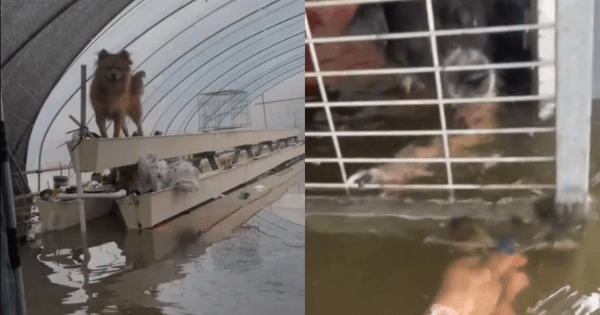The rescue of dogs trapped in flooded homes during the storm is a story of courage, compassion and survival against unimaginable odds. These animals, trapped in a situation they cannot escape, are threatened by rising waters that threaten their lives. Their plight highlights the vulnerability of animals in natural disasters and the vital role rescuers play in saving lives when hope seems lost.
When the storm hit, it brought torrential rains that quickly turned streets into rivers and homes into isolated islands. The floodwaters rose quickly and relentlessly, rising faster than many people could react. People tried to save themselves, but in the chaos, pets were often left behind, trapped inside their homes as the floodwaters rose. For the dogs in those homes, the situation was dire. Some dogs were trapped on furniture, while others tried to stay on higher ground, but as the rain continued to fall, their options became increasingly limited.
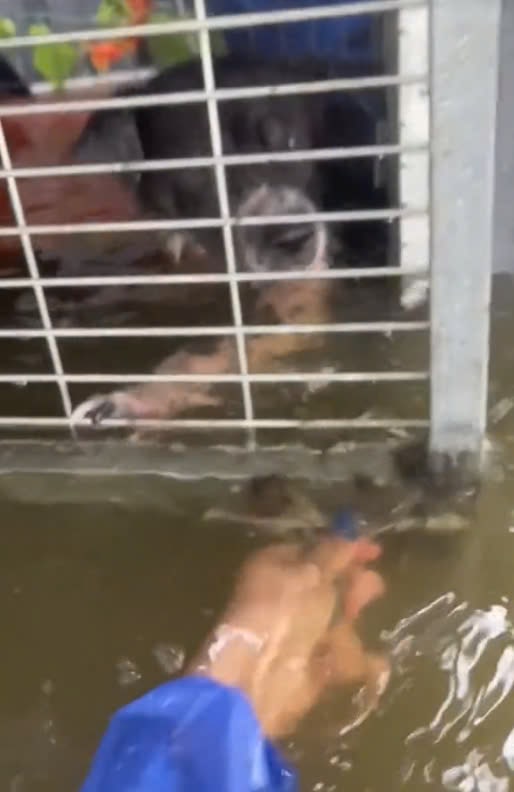
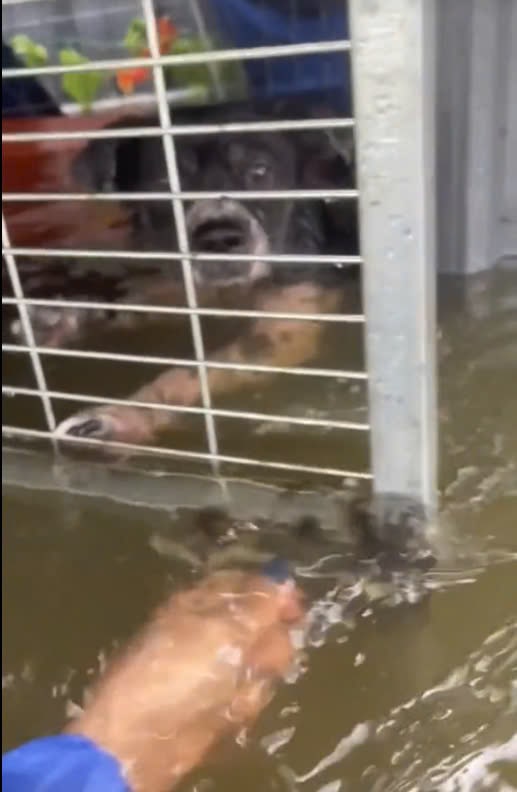
Homes that had once been safe havens were now dangerous, flooded structures. Windows were shattered by the force of the wind, and the roar of the storm was heard as the water rose higher. Many dogs did not understand what was happening; their instincts told them to seek shelter, but the walls that had once protected them were now pressing in, leaving no escape. The panic and fear in their eyes was palpable, even to those who could not see them directly. Neighbors reported hearing desperate barking, whining, and scratching at doors from inside homes that were no longer accessible due to the floodwaters.
The response teams to the situation included volunteers, animal welfare organizations, and emergency personnel. These individuals are risking their lives to help others, not only those affected by the storm, but also pets who have been left behind. Equipped with boats, life jackets, and other emergency equipment, they wade through floodwaters, navigating roads that have become waterways. Visibility is poor, and the water is flowing strongly, making each rescue mission a challenge.
Each time rescuers approach a flooded home, they are unsure of what they will find. In some cases, dogs are standing on kitchen counters or clinging to high shelves, trying to avoid rising water. In others, the situation is more dire, with dogs submerged up to their necks, struggling to keep their heads above water. Time is of the essence, and rescuers move quickly, knowing that any delay could put the animals’ lives in danger.
The physical condition of the dogs varies. Some were wet but uninjured, while others had been traumatized by debris in the water or weakened by exhaustion. The emotional toll on the animals was obvious—they were scared, disoriented, and desperate for help. The rescuers spoke softly to the dogs as they approached, trying to reassure them before lifting them to safety. In many cases, the dogs, though frightened, seemed to understand that these strangers had come to help. They did not resist as they were gently lifted from flooded homes and onto waiting boats.
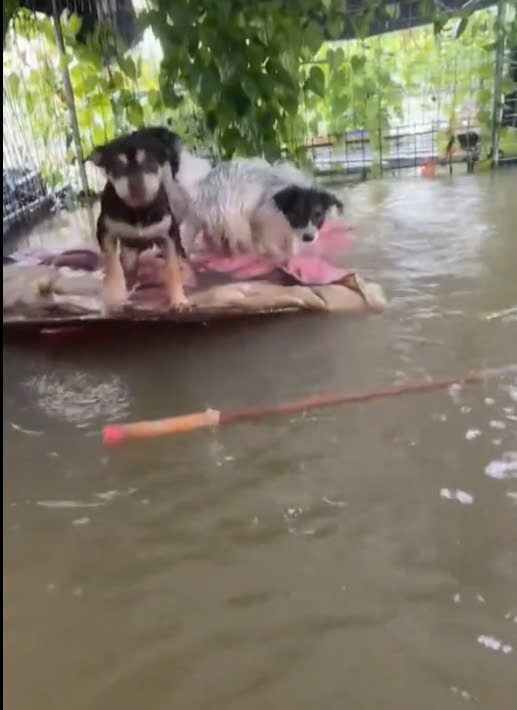
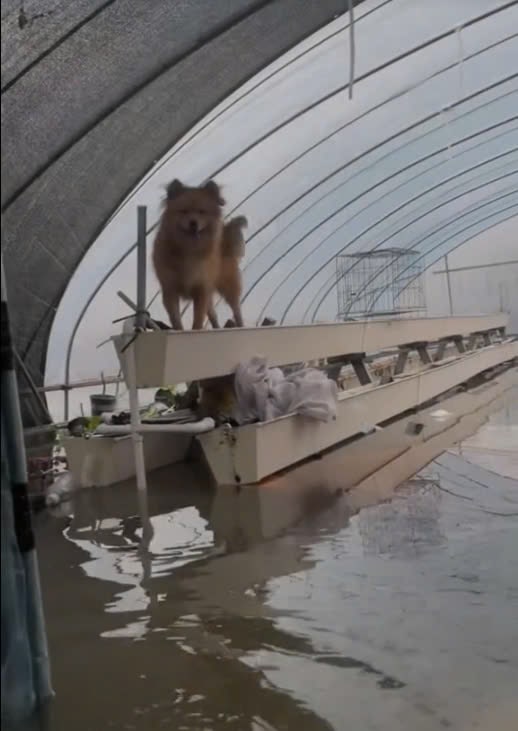
For each rescued dog, the relief was palpable. Some happily wagged their tails, while others rested their heads on the rescuers’ shoulders, too exhausted to express anything other than quiet gratitude. Each dog was quickly taken to a safe place where they could be dried, warmed, and examined by veterinarians. Immediate care was essential, as the cold water had taken its toll on many of the dogs. Hypothermia was a real threat, especially for smaller dogs or those with shorter coats, and every effort was made to stabilize them.
As the rescue missions continued, it became clear that the problem was widespread. Dozens of homes had been flooded, and many more dogs were still waiting to be rescued. Rescue teams worked tirelessly, returning to flooded areas over and over again, determined not to leave any dogs behind. Each successful rescue was a victory, but there was no time to celebrate—the next home was always just around the corner, and with it, dogs in dire need of help.
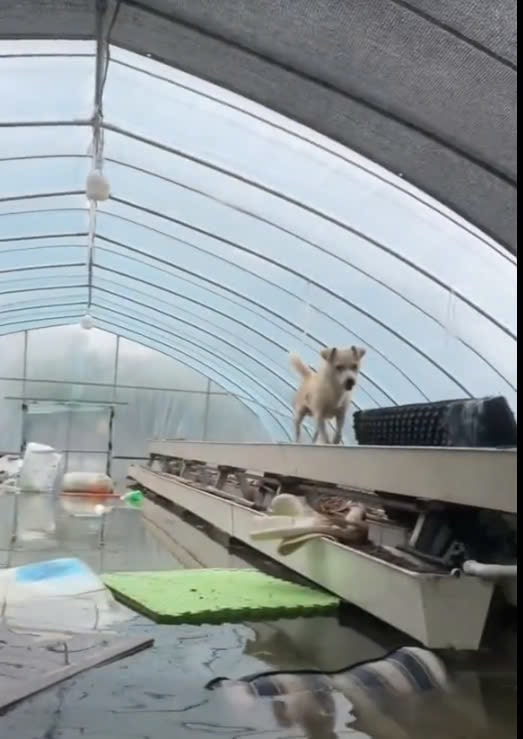
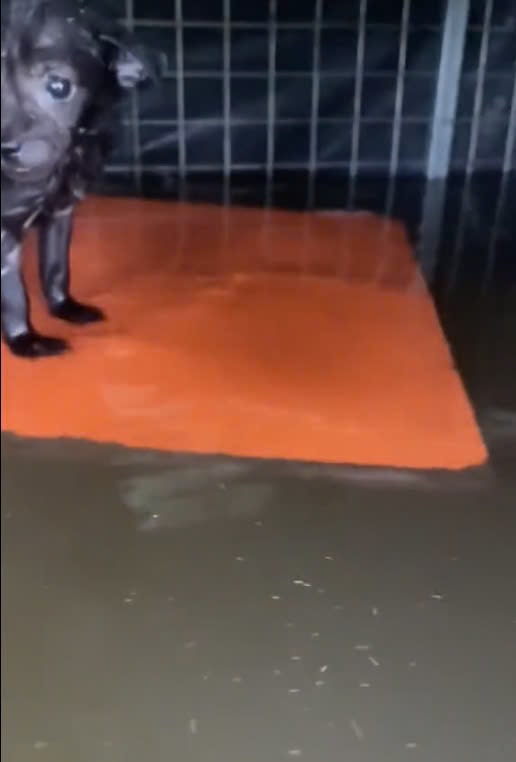

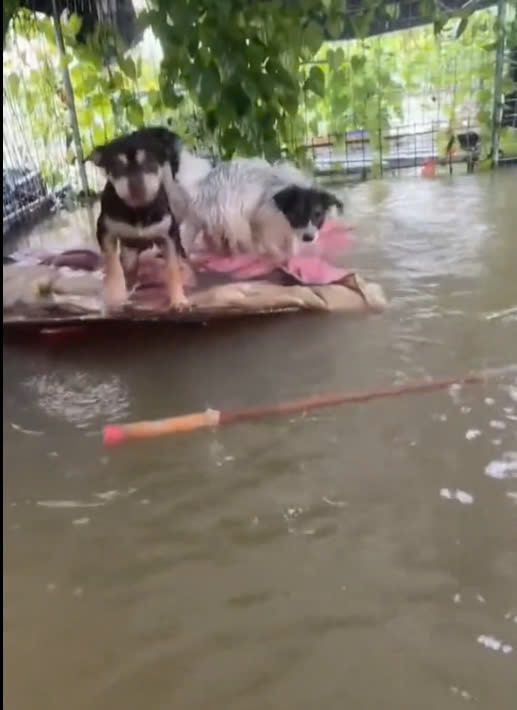
Despite the exhaustion and physical demands, the rescuers were motivated by the knowledge that their efforts were saving lives. Some dogs have been family pets for years, while others are stray dogs have found shelter in homes. Regardless of their background, each dog is treated with the same level of care and compassion. Rescuers know that these animals, like their human companions, have been through a horrific ordeal, and their priority is to provide comfort and safety.
The response from the community has been incredible. Local shelters have opened their doors to the rescued dogs, providing them with a warm, dry place to recover from their suffering. Volunteers work around the clock to ensure that each dog receives food, water, and medical care. Veterinarians examine the dogs for any injuries or illnesses and provide the necessary treatment. For many dogs, this is the beginning of their journey to recovery, both physically and mentally.
As the storm subsided and floodwaters began to recede, attention turned to reuniting dogs with their owners. Social media played a key role in the effort, with shelters posting photos of rescued dogs in hopes of finding their owners. For some dogs, the reunions were immediate, with owners who had been frantically searching for their pets showing up at the shelter as soon as they heard the news. The joy and relief on both sides was palpable as families were reunited after the storm had torn them apart.
However, not every dog had an owner waiting. Some were strays, and others were pets of families who had been affected by the storm and could no longer care for them. For these dogs, shelter staff worked tirelessly to find new homes. Adoption campaigns were launched, and soon, people from all over the area were stepping up to give these dogs a second chance. The outpouring of support from the community was incredible, with many people moved by the resilience and courage of the dogs who had survived the floods. For the dogs trapped in their flooded homes, life took a dramatic turn.
